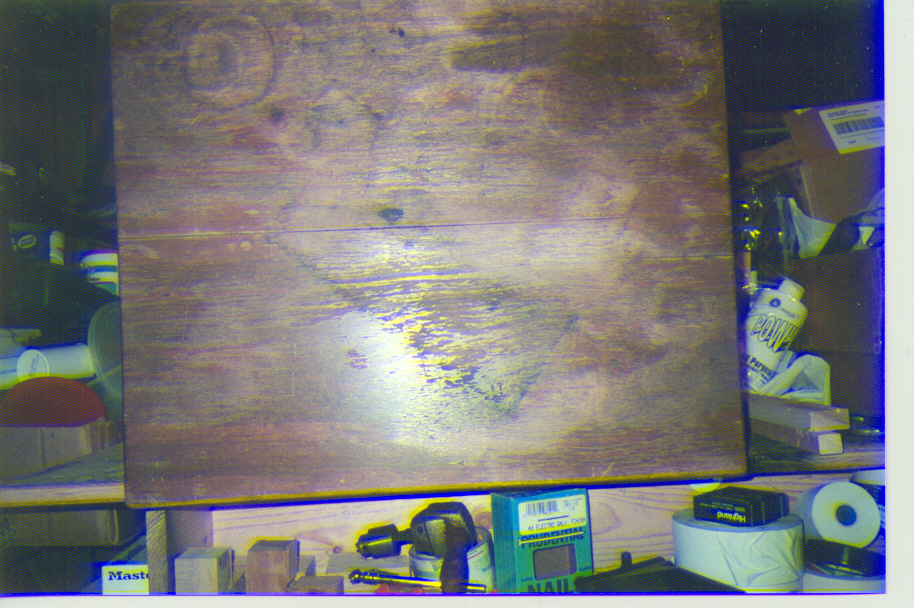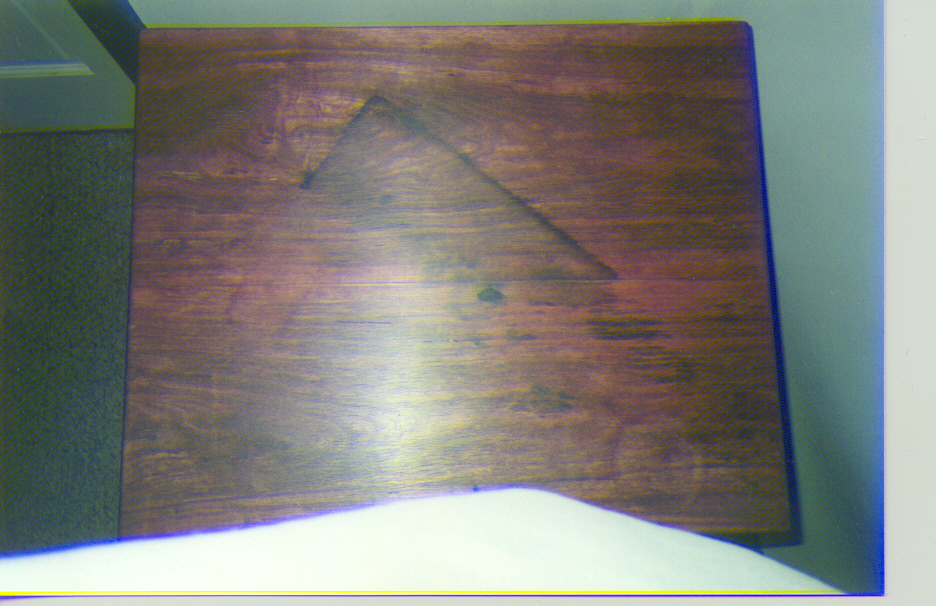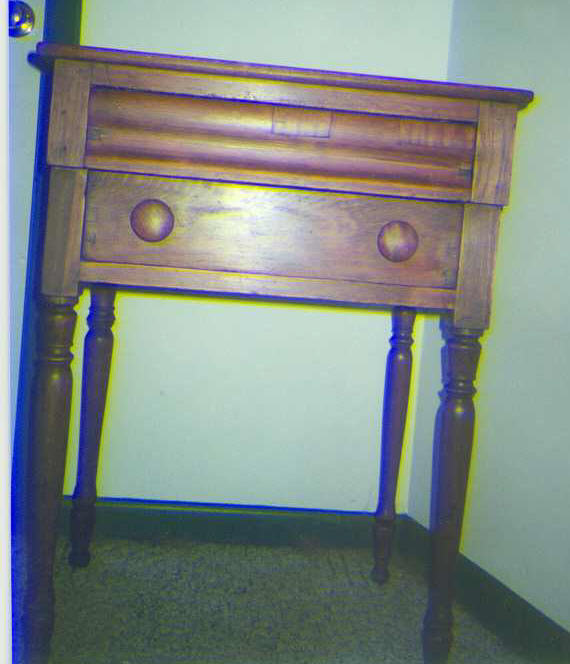Future Link |
Enter Link |
You can submit any questions regarding furniture, guitars, woodworking in general by e-mail below. I will provide a response as soon as possible. I will also entertain an comments regarding my business or website. |
The Axe Handle Tips & Messages |
This page was last updated on: June 11, 2002


BEFORE |
AFTER |

">
">
">
">
A Simple, Elegant Finish |
For a soft, warm, "antiquey" glow, few finishes rival simple Beeswax,and I can think of few that are simpler.There are many commercially available formulations. For old dry wood, such as the pictured table, I prefer a rather "liquidy" solution. The one I used had an oil mixed in to aid penetration. This table had severe water damage, so it first had to be reglued and leveled. Then I applied four coats of beeswax, allowing for the evaporation of solvents in between. I had less than 1 hour of time invested in finish application! Beeswax's main drawback is lack of durability. However, it is a simple matter to repair it. Just rub on another coat or two! My recommendarion for the care of a beeswax finish is also as simple. Wipe clean with a clean, dry cloth (I use flannel purchased in the fabric department).For stubborn spots, slightly dampen the cloth. Apply a new coat of wax annually for a lasting finish, more frequntly for heavier use. For custom beeswax blends, buy it in its pure state and dissolve it in mineral oil to the consistency of your choosing. You can also blend in other waxes for differing properties( carnuba and paraffin waxes are harder and shinier). |
Brass tarnishes, or is oxidized, by basic elements in the air. To remove tarnish, reduce it with an acid. I prefer white vinegar (acetic acid), but lemon juice and other readily available acids work too. Vinegar is cheap, effective, and above all, safe! For pieces small enough to soak, I first soak them in hot soapy water for 20 minutes or so. Then I rinse and soak them in a 3:1 vinegar and water solution. A tbsp. of salt and a squirt of dishsoap increase it's effectiveness. Let the parts soak long enough to loosen the grime and an easy rub with a scotch-brite (and maybe some soap) will bring a nice shine. Rinse well and dry. For large items, use salt and vinegar made into a loose paste with flour and rub the tarnish off with a scotch-brite or blitz cloth. If you air dry your brass after cleaning in the vinegar solution, you may notice some reddish discoloration, especially in pitted areas. Brasso will easily remove this. An alternative to air drying is to place the pieces in a low temperature oven (approx 200 degrees) until dry. You could also "blow dry" them with a hair dryer or ceramic heater. To inhibit future tarnishing, lacquer is the best. If you are uneasy about working with laquer, a carnuba-based wax will offer plenty of protection, but needs to be reapplied annually, more on heavily used items (drawer pulls, etc.) |
">
">
">
">